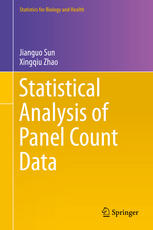

Most ebook files are in PDF format, so you can easily read them using various software such as Foxit Reader or directly on the Google Chrome browser.
Some ebook files are released by publishers in other formats such as .awz, .mobi, .epub, .fb2, etc. You may need to install specific software to read these formats on mobile/PC, such as Calibre.
Please read the tutorial at this link: https://ebookbell.com/faq
We offer FREE conversion to the popular formats you request; however, this may take some time. Therefore, right after payment, please email us, and we will try to provide the service as quickly as possible.
For some exceptional file formats or broken links (if any), please refrain from opening any disputes. Instead, email us first, and we will try to assist within a maximum of 6 hours.
EbookBell Team

4.0
26 reviewsPanel count data occur in studies that concern recurrent events, or event history studies, when study subjects are observed only at discrete time points. By recurrent events, we mean the event that can occur or happen multiple times or repeatedly. Examples of recurrent events include disease infections, hospitalizations in medical studies, warranty claims of automobiles or system break-downs in reliability studies. In fact, many other fields yield event history data too such as demographic studies, economic studies and social sciences. For the cases where the study subjects are observed continuously, the resulting data are usually referred to as recurrent event data.
This book collects and unifies statistical models and methods that have been developed for analyzing panel count data. It provides the first comprehensive coverage of the topic. The main focus is on methodology, but for the benefit of the reader, the applications of the methods to real data are also discussed along with numerical calculations. There exists a great deal of literature on the analysis of recurrent event data. This book fills the void in the literature on the analysis of panel count data.
This book provides an up-to-date reference for scientists who are conducting research on the analysis of panel count data. It will also be instructional for those who need to analyze panel count data to answer substantive research questions. In addition, it can be used as a text for a graduate course in statistics or biostatistics that assumes a basic knowledge of probability and statistics.